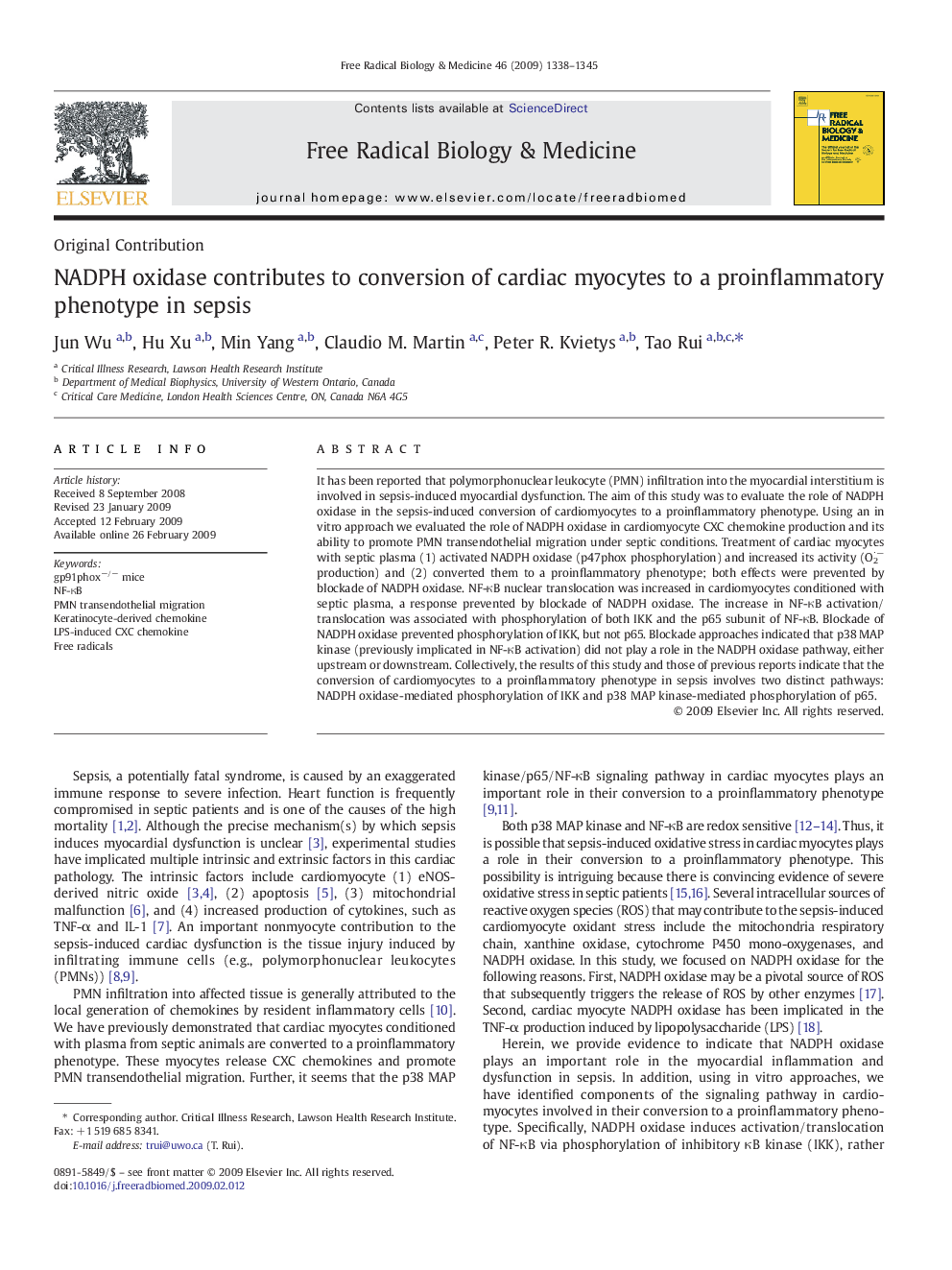| Article ID | Journal | Published Year | Pages | File Type |
|---|---|---|---|---|
| 1910234 | Free Radical Biology and Medicine | 2009 | 8 Pages |
It has been reported that polymorphonuclear leukocyte (PMN) infiltration into the myocardial interstitium is involved in sepsis-induced myocardial dysfunction. The aim of this study was to evaluate the role of NADPH oxidase in the sepsis-induced conversion of cardiomyocytes to a proinflammatory phenotype. Using an in vitro approach we evaluated the role of NADPH oxidase in cardiomyocyte CXC chemokine production and its ability to promote PMN transendothelial migration under septic conditions. Treatment of cardiac myocytes with septic plasma (1) activated NADPH oxidase (p47phox phosphorylation) and increased its activity (O2− production) and (2) converted them to a proinflammatory phenotype; both effects were prevented by blockade of NADPH oxidase. NF-κB nuclear translocation was increased in cardiomyocytes conditioned with septic plasma, a response prevented by blockade of NADPH oxidase. The increase in NF-κB activation/translocation was associated with phosphorylation of both IKK and the p65 subunit of NF-κB. Blockade of NADPH oxidase prevented phosphorylation of IKK, but not p65. Blockade approaches indicated that p38 MAP kinase (previously implicated in NF-κB activation) did not play a role in the NADPH oxidase pathway, either upstream or downstream. Collectively, the results of this study and those of previous reports indicate that the conversion of cardiomyocytes to a proinflammatory phenotype in sepsis involves two distinct pathways: NADPH oxidase-mediated phosphorylation of IKK and p38 MAP kinase-mediated phosphorylation of p65.
